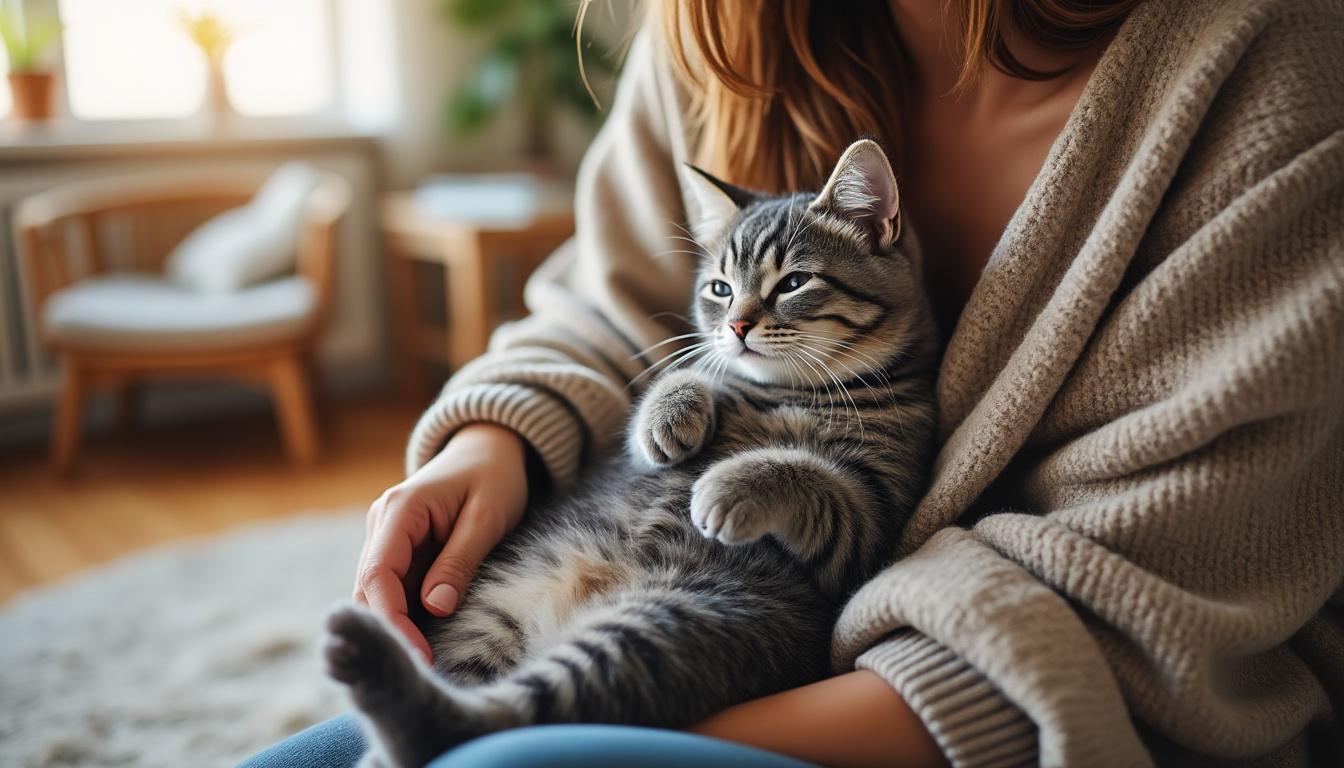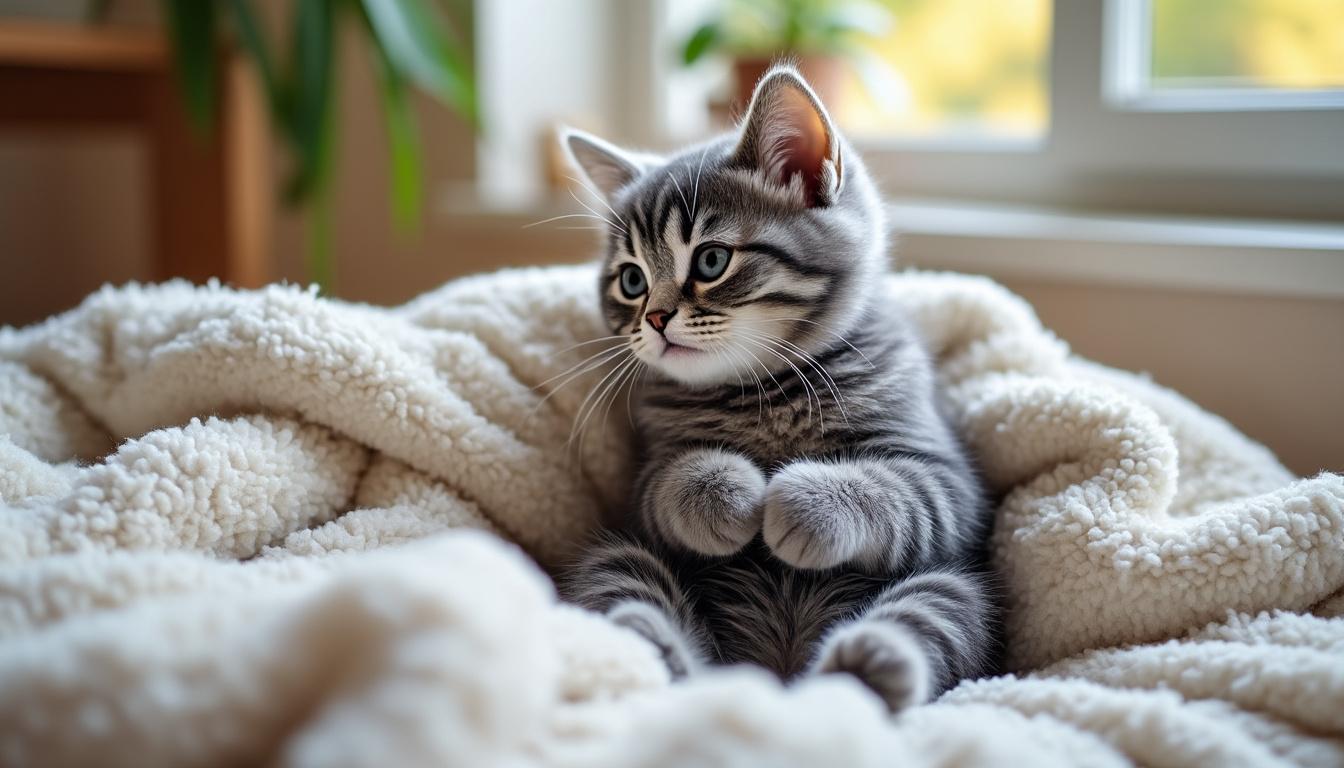Have you ever found yourself cozied up on the couch when your feline friend decides to join you, kneading away at your lap or blanket? It’s just one of those adorable quirks of cat behavior that can leave you puzzled yet strangely charmed. This rhythmic pressing motion, often associated with purring, raises many curious questions. What triggers this behavior? Why does your cat seem to derive so much joy from pressing their paws into soft surfaces? While it might be tempting to think it’s just a cute little quirk, there’s a lot of fascinating psychology and instinctual behavior involved. Cats are complex creatures with deeply ingrained habits, and kneading is a behavior that connects them to their wild ancestry and their early experiences with their mothers.
Over the years, pet owners and scientists have put forth various theories to explain why cats knead. The truth is, this behavior is multi-faceted and can convey a combination of emotions, from comfort to affection and even territorial marking. While kneading can be a sign of contentment, it can also indicate a cat’s need for security or even relief from anxiety. As we explore the various layers of this behavior, you’ll gain insights into what’s going on in that little mind of your cat and how you can foster a good relationship, ensuring that both of you are happy and comfortable.
- 🐾 Kneading originates from kittenhood, where it helps stimulate milk flow.
- 🐱 It connects cats to feelings of comfort and security.
- 🌍 Kneading serves as a territorial marking behavior.
- 💖 It can also signify affection when directed toward humans.
- 🐈 Excessive kneading might indicate stress or anxiety requiring attention.
The Origins of Cat Kneading: A Kittenhood Connection
The most accepted explanation for why cats knead relates to their time as kittens. When they are born, their primary necessity is to eat, and they instinctively knead against their mother’s stomach to stimulate the flow of milk. This behavior is not just cute; it plays a crucial role in their survival and bonding with their mother. While they knead, they also release oxytocin, often referred to as the “bonding hormone.” This connection creates a strong emotional response familiar to many cat owners.
As adult cats, they carry forward this instinctual behavior. When your cat curls up on your lap and starts kneading you, it might be a way of expressing feelings of love, comfort, and nostalgia for those early days. The rhythmic motion correlates with feelings of safety and security. Think about it: you’ve become a surrogate substitute for their mother, embodying warmth and reassurance.
Another interesting aspect of this behavior is the presence of purring during kneading. When a cat purrs while kneading, it indicates a heightened state of pleasure. 🐾 It’s almost as if they’re reliving the joys of their kittenhood while simultaneously strengthening their bond with you.
Why Kneading is Essential for Kittens
For kittens, kneading serves multiple purposes. It signals hunger and encourages milk production from their mothers. But let’s explore a couple more critical elements:
- 🐾 Bonding: Kneading helps establish a connection between the kitten and its mother as they engage in this instinctive behavior.
- 🐱 Security: Instinctively kneading provides comfort and helps the kitten feel safe in its environment.
| Kneading Benefits for Kittens | Emotional Impact |
|---|---|
| Stimulates milk flow | Fosters trust and security |
| Bonding with mother | Encourages feelings of safety |

The Behavior of Kneading in Adult Cats
As cats transition from kittenhood to adulthood, many of these behaviors remain, but the motives behind them can evolve. Adult cats knead primarily for several reasons: comfort, territorial marking, and sometimes even for stimulation.
When your cat kneads you or your favorite blanket, it indicates a strong emotional connection. They associate this action with feelings of safety, and it can serve as a form of self-soothing, especially during stressful times. If they’ve had a rough day—maybe a loud noise or changes in their environment—kneading can help them relax and feel safe again.
Territorial Marking Through Kneading
Interestingly, every paw knead is not just an expression of affection; it also serves a functional purpose in the wild. Cats have scent glands located in their paws, and by kneading, they are indeed marking their territory. The act of leaving their scent behind is their way of claiming ownership over an object or space. Think of it as your cat saying, “This is my human.” This instinct kicks in when they’re kneading on a blanket or even on your lap, reinforcing their bond and claiming you as part of their territory.
- 🏡 Comforting: Provides emotional healing and security.
- 🛏️ Preparing for Sleep: Kneading can also be a preparation for sleep, as in the wild they would create a cozy nesting spot.
- 🧘 Self-soothing: Cats may knead to calm themselves down when stressed or anxious.
| Reasons for Kneading in Adult Cats | Emotional Impact |
|---|---|
| Affection towards owner | Creates a feeling of belonging |
| Marking territory | Establishes a secure home environment |

Understanding When Kneading Becomes a Problem
While kneading is typically a harmless and endearing behavior, there are cases when it can become excessive or turn problematic. As delightful as the action may be, excessive kneading can lead to negative emotions, stress, or discomfort—both for the cat and the human.
Signs of Excessive Kneading
Cats may begin kneading excessively due to underlying anxiety or discomfort. Here’s a quick checklist of signs to watch out for:
- 😖 Compulsive behaviors: If your cat seems fixated on kneading continuously without breaks.
- 🏥 Physical damage: Look for signs of wear on your cat’s paws or claws that could indicate they aren’t coping well.
- 😿 Discomfort indicators: If they seem increasingly restless or anxious, it might be worth consulting a veterinarian.
| Signs of Excessive Kneading | Possible Causes |
|---|---|
| Constant kneading | Potential stress or anxiety |
| Damaged paws | Need for coping mechanism |
How to Manage Your Cat’s Kneading Behavior
Managing the kneading behavior can help you maintain a happy relationship with your feline companion. Here are some practical strategies:
Provide Proper Outlets
- 🛏️ Designated kneading spots: Place soft blankets or pet beds where your cat can knead without causing harm to both themselves and you.
- ✂️ Keep nails trimmed: Regularly trimming your cat’s claws can help reduce scratches during kneading.
- 🐾 Positive reinforcement: Reward your cat for kneading in designated areas to reinforce good behavior.
The key to managing your cat’s kneading behavior is to do it positively. Never punish your cat for this behavior, as it may lead to feelings of fear or anxiety. Instead, try gently redirecting them or encouraging them toward a softer surface.
| Strategies for Managing Kneading | Expected Outcome |
|---|---|
| Provide designated surfaces | Cat feels comfortable and safe |
| Trim claws regularly | Reduced scratching and discomfort |
Frequently Asked Questions About Cat Kneading
Why do cats knead?
Cats knead primarily as an instinctive behavior stemming from their kittenhood. It’s a way to express contentment, mark territory, and bond with their owners.
Is kneading always a sign of happiness?
While often a sign of happiness, kneading can also occur due to anxiety or stress, serving as a self-soothing mechanism.
Can kneading be harmful?
Excessive kneading can lead to discomfort for both the cat and owner. It’s essential to monitor their behavior for signs of distress.
How can I minimize scratches during kneading?
Regularly trim your cat’s claws and provide soft surfaces for kneading to minimize the chance of scratches.

